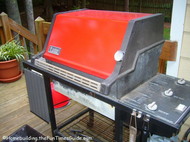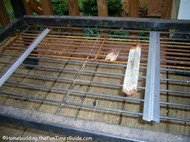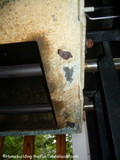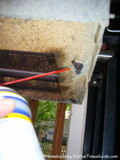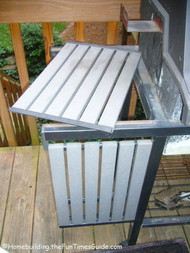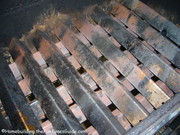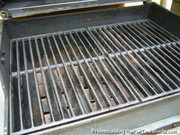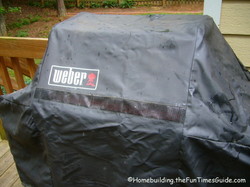‘Help! My Weber gas grill has fallen and it can’t get up!’
Pardon the slight adaptation of that old commercial slogan but I’ve got a slight dilemma on my hands here. OK…so it’s not quite on a level anywhere near what the astronauts on Apollo 13 went through but’s it’s a problem, nonetheless. I bought my smokin’ red Weber Genesis 1000 back in the early 90’s and, unfortunately, it has seen better days.
It has been the best (well…the only) gas grill I’ve ever owned. Nearly every homeowner owns a grill these days. I love mine so much that I’ve bought quite a few replacement parts and accessories for it over the years to keep it up and running. But now rust has reared its’ ugly head and limited my options on prolonging the life of my friend…ol’ Red.
If I can resuscitate ol’ Red, I will, but I might need to face facts and send him to that big grilling party in the sky.
Why would I want to toss out a grill that’s given me 15 years of nearly flawless service and delicious meals?
I don’t want to toss out my old gas grill. The replacement part that I’ve ordered for it are the guide rails for the drip catch tray under the cooking box.
I didn’t find this particular part in Home Depot or Lowe’s or Weber’s online replacement parts store so I contacted customer support online at Weber. I explained what I needed and what model I had.
I received an email back the following day stating that they had the part(s) I needed and that if I supplied my mailing address and phone number, they would send the parts to me. Of course I emailed him back asking for the cost of the parts and the shipping fee. Would you believe that they offered the parts at no charge and free shipping!!! In addition, my grill had far exceeded the warranty period. These emails that we were sending back and forth were being answered within hours, not days or weeks, mind you.
That’s what I call customer service!
I figured it would take about 4-5 days to arrive and I was right. I grabbed the box off of my front porch to see if I had received the correct parts. (There are so many models from over the years that I wasn’t sure if I had correctly communicated the exact part I needed.) The parts were the correct ones to get ol’ Red back up and running.
Fact: Did you know that there were 17 million grills sold in the US and Canada in 2006 and that 81% of US households own a barbecue grill and the number of grill owners steadily increases year-after-year?
So yesterday I get out my tools to remove and replace the guide rails. Problem. The old screws were slightly rusted (understatement). What now?! WD-40 to the rescue! I sprayed all four screws and gave the WD-40 time to penetrate to loosen things up a little. I end up being able to remove only 1 of the screws. The others will have to wait until I gather more patience and give it another shot.
Here’s a list of what I’ve replaced over the years:
- Porcelain-enameled Flavorizer bars (twice)
- Porcelain-enameled cooking grates
- Lid handle: The original handle was wood.
- Catch pan and holder
- I originally had wood work tables but I replaced them with Durawood tables when the originals rotted.
I also purchased a couple of grill covers and a very handy rotisserie years ago that provided excellent service and still does on occasion.
My first grill after becoming a homeowner was a large Weber kettle grill. I later decided to purchase the LP gas grill for ease of use and quick, outdoor meals. Once I had the gas grill, the charcoal kettle was pushed to the side in favor of the quick and easy gas model. It wasn’t until a couple of years ago when we were at a friends’ house having a cookout and they were serving up charcoal-grilled hamburgers. I had almost forgotten how great the unmistakable flavor that charcoal lent to burgers. It wasn’t long after that cookout that I went out and got another (smaller) charcoal kettle grill. It now shares the outdoor cooking duties with the gas grill.
If all of the items mentioned above had needed to be replaced all at once, I would have said ‘screw it!’ and bought another grill. But that’s not the way it played out.
Another reason why I’ve kept it all of these years is because the burner tubes and electronic spark igniter have never needed to be replaced, although the igniter has just begun to require several clicks to start the flame. I’ve noticed over the years that the igniter on lesser-quality grills quits working not long after the first season, or two, so I’ve been pleased with my Weber, to say the least.
I’ve also discovered that the cooking box itself has begun to rust out near the bottom corner. That’s not a problem that will prevent me from using the grill if I can replace the tray guides, though.
If I do need to replace my grill, you can bet that it will be none other than a Weber. But for now, I’ll just cover it and stoke up the briquets of my Weber One-Touch kettle grill.
Related
Hearth, Patio and Barbecue Association (HPBA)

